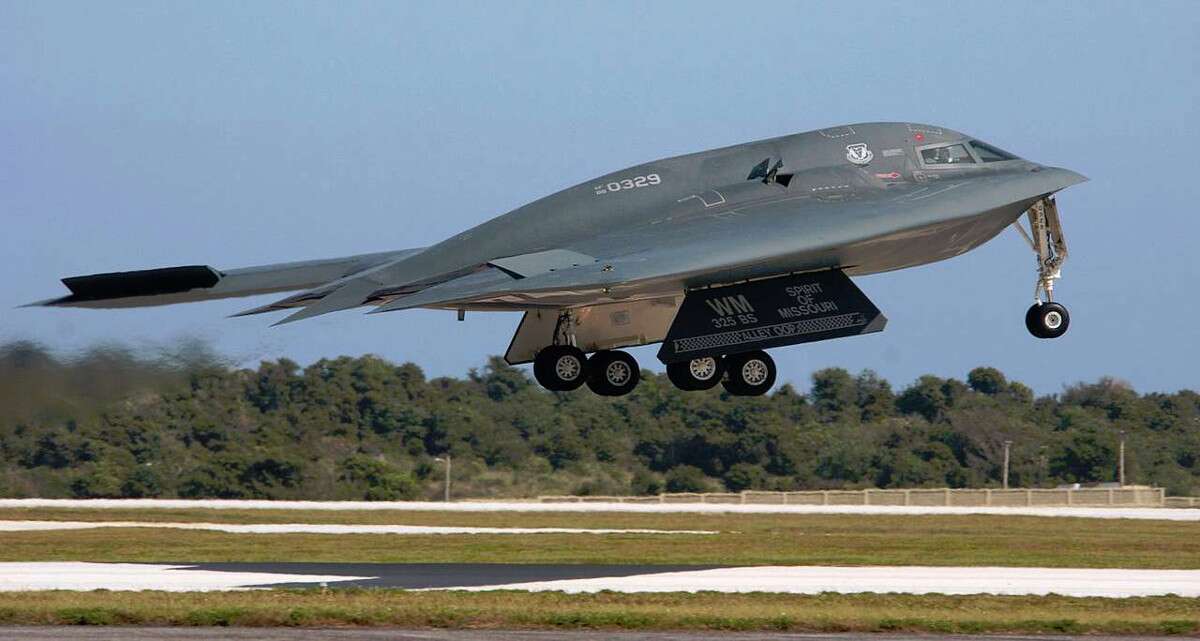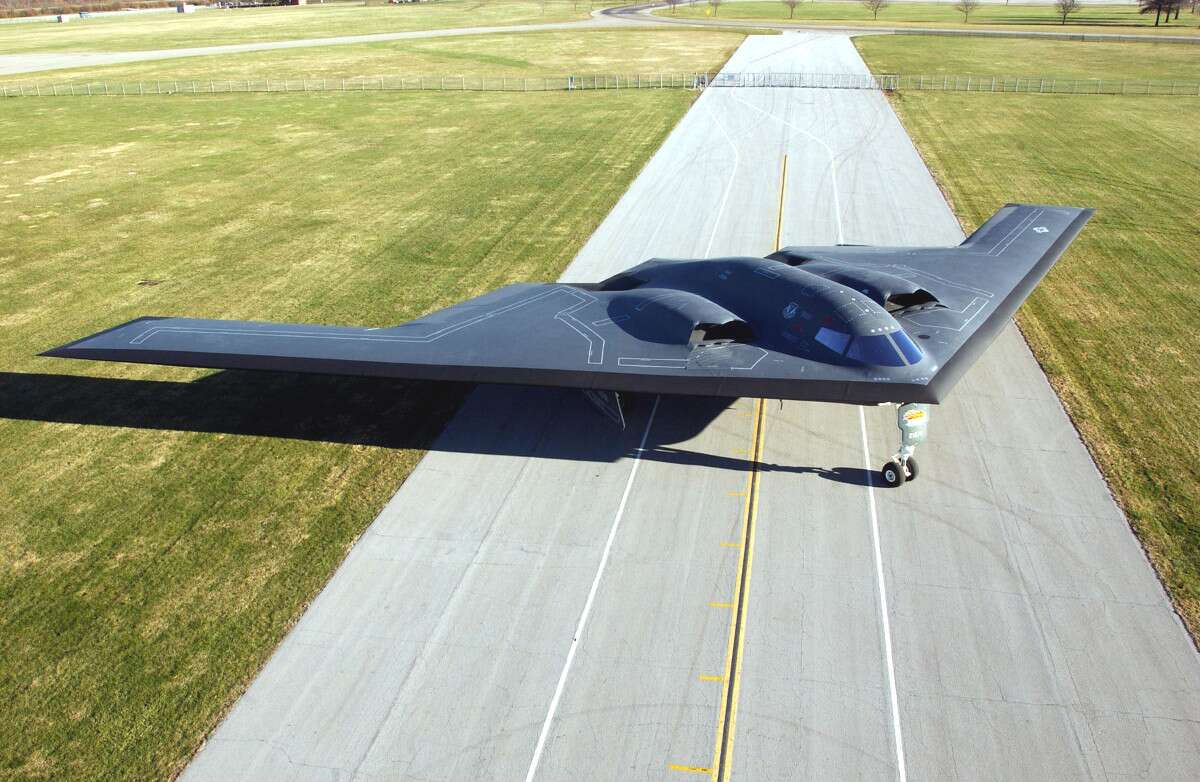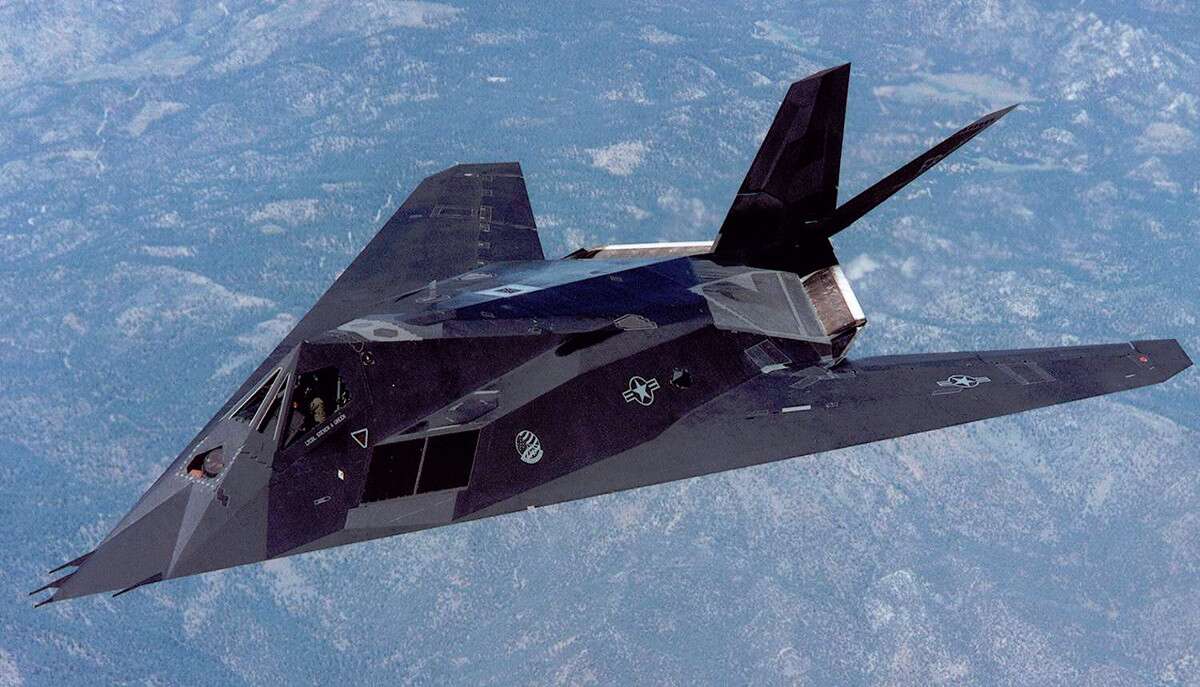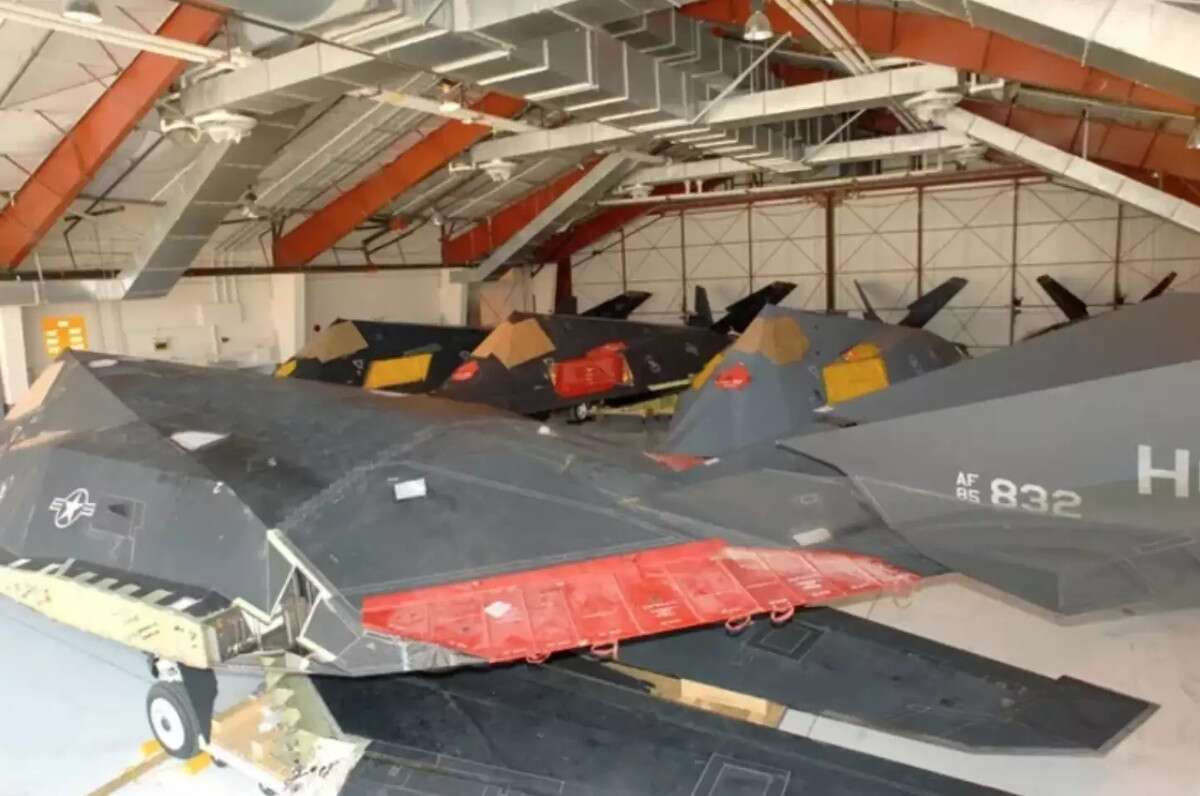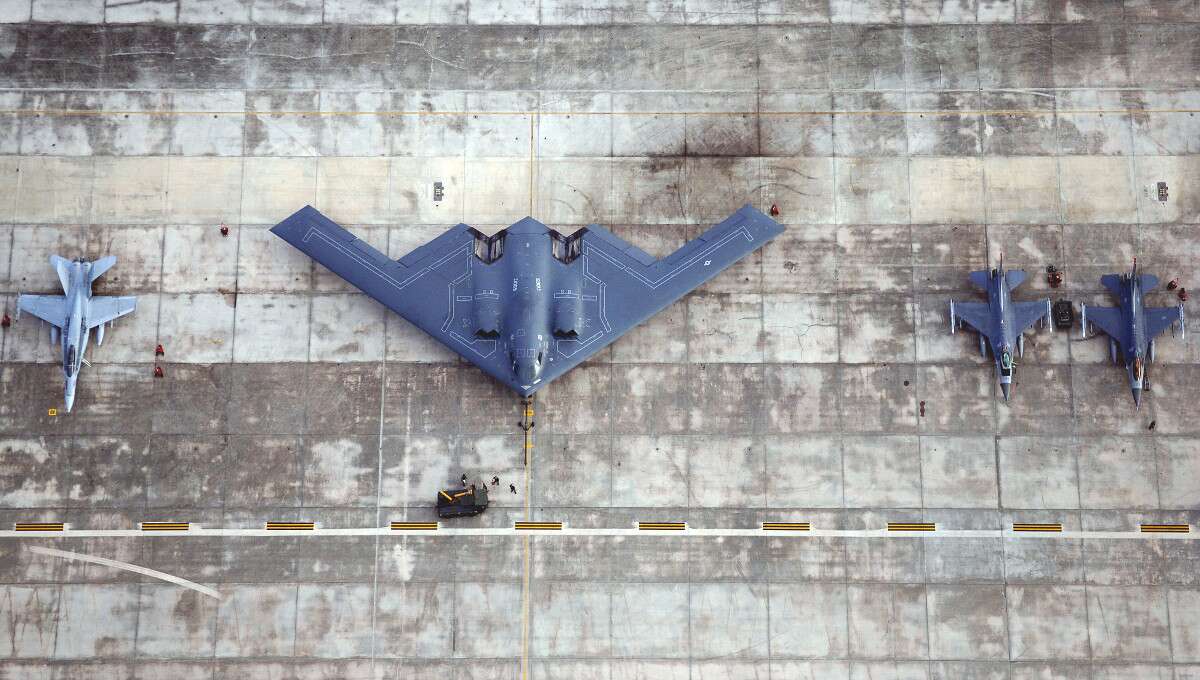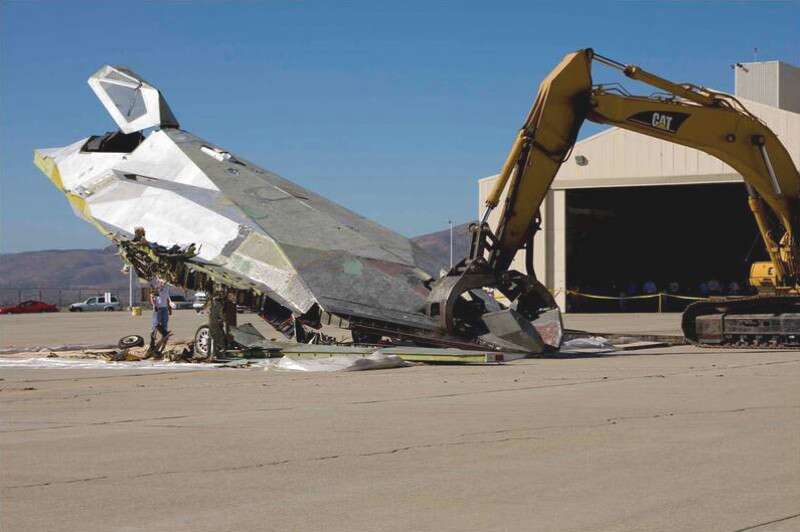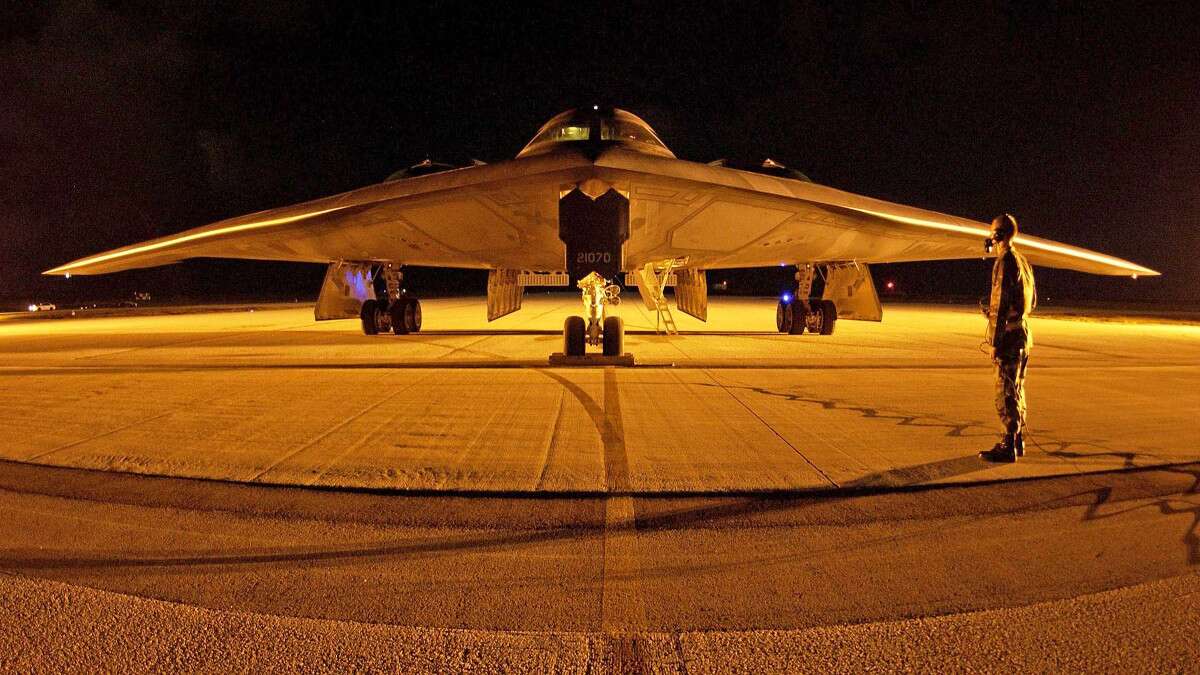The U.S. Air Force’s new B-21 Raider stealth bomber is steadily moving closer to entering production and eventually replacing the existing B-2 Spirits. At the same time, with plans to have all of the older flying wing bombers retired within 15 years, the service will have to figure out soon how it will store or dispose of those aircraft in a way that is practical, safe, secure, and meets the demands of any existing or future arms control deals.
At present, the Air Force has 20 B-2 bombers and all but one of these are situated at Whiteman Air Force Base in Missouri. At any one time, only a fraction of the small fleet is ready for operational missions. But if the B-21 program remains on schedule, the B-2 fleet should begin heading into retirement in the late 2020s and could be completely out of service by 2032, per an official “bomber vector” plan that emerged publicly in February 2018.
“At this time it is too early in the process to discuss the future disposition of the B-2,” Linda Frost, a spokesperson for Air Force Global Strike Command told The War Zone in an Email. “It’s too premature to publicly release anything [about any retirement plans] at this time.”
AFGSC oversees all of the Air Force’s bombers, including the B-1, B-2, and B-52, and will take control of the B-21s when they enter service. We also reached out to the public affairs office for the 309th Aerospace Maintenance And Regeneration Group (AMARG), which oversees the U.S. military’s main aircraft boneyard at Davis Monthan Air Force Base in Arizona. They told us that AFGSC would lead any planning for how to divest the bombers in the future.
One of the Air Force’s 20 B-2 bombers.
But if the Air Force has not actually begun working out a plan for what it will do with the B-2s, or done so already, it will have to start doing so soon. Depending on a variety of factors, the service may not be able to put these planes literally “out to pasture” in the desert at Davis-Monthan as it has done with a host of other aircraft types in the past.
The B-2’s highly sensitive construction alone could create demands for added physical security. Even though it took its first flight in 1989 and was in development years before that, the B-2 and details about many of its stealthy features and other components remain highly classified.
Aspects of the aircraft remain so secret that members of the media have been banned from taking photographs of the rear of the plane. As such, the Air Force will have to ensure that wherever it decides to store the B-2s, even temporarily, makes it difficult, if not impossible for spies, thieves, or just aviation geeks, to break in.
This could also preclude sending the aircraft off to U.S. government-run or third party museums without significant work to remove classified equipment and other features. To put F-117 Nighthawk stealth jets on display, the Air Force has had to put them through an arduous process to remove the aircraft’s toxic radar-absorbent coating, as well as pulling out any still-sensitive mission systems and modifying certain structures on the airframe itself.
The B-2 test article at National Museum of the U.S. Air Force, serial number AT-1000, which carries the same markings as the operational B-2, serial number 82-1070, which also has the nickname “The Spirit of Ohio.”
It’s also worth noting that the National Museum of the U.S. Air Force already has a non-flyable B-2 test article in its exhibit halls that required a lot of modification to make it safe to display. They might not be interested in even taking another airframe unless they can find a new home for the existing one first. A small number of others might go to other high profile American aviation museums, such as the National Air and Space Museum’s annex near Dulles Airport in Virginia, if it is even feasible. But the service will have to devise a plan for what to do with the remaining aircraft.
Still, this isn’t the first time the Air Force has had to contend with these sorts of logistical issues with a particularly sensitive type. When it officially retired the F-117s in 2008, the service initially put them into storage at the secretive Tonopah Test Range Airport rather than at the main boneyard.
An F-117 Nighthawk.
“Priority Level (PL) 3 security had been mandated for the stored fighters, requiring double lines of fencing, double the normal degree of surveillance, Special Access Required (SAR) clearances for all having access to the aircraft, and other extreme security measures,” according to an official Air Force history we previously obtained via the Freedom of Information Act. “The logical repository for the F-117, the AMARG, lacked the security resources required under PL 3, thus the selection of the Nevada facility.”
Even Tonopah, which had hosted the F-117 during its top-secret early operational period, and already had state-of-the-art security features, needed substantial improvements to take on this new mission. The Air Force spent more than $2 million upgrading the site ahead of the Nighthawk’s retirement, a process that took more than a year to complete.
It’s not clear if the B-2s will require such stringent security, though. The remaining F-117s are in so-called Type 1000 storage, which requires they receive a certain amount of regular maintenance and other checkups so that they can return to active service on relatively short notice if necessary.
Most of the aircraft ended up packed four to a hangar with their wings off to help consolidate space and save money. A handful, said to be around six aircraft, remained in flyable condition.
Five wingless F-117s share a hangar at Tonopah.
We don’t know how much of the cost of improving the facilities at Tonopah was related to the Type 1000 storage requirements versus the need to add PL 3 security features. In addition, the demands of semi-active storage for aircraft still wearing their radar-absorbent coatings and carrying various mission equipment and avionics might have driven the need for the increased physical security.
There is no indication that the Air Force has any desire to put the very costly to operate B-2s in Type 1000 storage given the maintenance costs associated with doing so and that the aircraft could end up competing for resources with the new B-21s. So, it might be easier for the service to store the Spirits, even temporarily, out in the open at Tonopah, another similar highly controlled site, or even at the boneyard at Davis Monthan under certain circumstances.
B-2 in the coating facility.
That being said, it was Congress that mandated the service put the F-117s into this inactive reserve status through the 2017 fiscal year. There is always the possibility, albeit remote, that lawmakers might make similar demands to maintain the older stealth bombers, at least until the Raiders have arrived in sufficient numbers and proven themselves capable of performing their missions.
And if the demands for PL 3 security features to guard the F-117s were at all independent of the Type 1000 storage requirements, then the B-2s could need similar security improvements wherever they end up in the future. Of course, if the Air Force succeeds in retiring the bombers for good, they will almost certainly have them stripped of their radar-absorbing material coatings, which will at least obviate the need for the aircraft to sit in costly climate-controlled hangars. If all of their sensitive components are removed as well, it may be possible to store them at AMARG, but just the complex radar-evading structure of B-2, what lies underneath its smooth skin, is deemed highly senistive.
A B-2 sits on the flightline at Andersen Air Force Base on Guam with an F/A-18 Hornet to the left and a pair of F-16 Vipers on the right.
If the air force doesn’t want to store any of the B-2s that don’t make it to museums, if any actually do, the alternative would be to physically destroy them. This process would come with its own complexities as it would have to be sufficient to prevent anyone from being able to recover any sensitive material.
Again, the service could look to its experience with the F-117 for guidance. In August 2008, Lockheed Martin destroyed a developmental YF-117, serial number 79-0784. This plane wouldn’t fit in storage at Tonopah and the Air Force deemed it to have no “historical significance.”
The goal was reportedly to test an effective method for disposing of the aircraft, should it come to that, but the exact reason for and results of the experiment remain murky. When I asked about the test in 2015, Air Force officials at the 309th AMARG and Air Force Materiel Command could not offer any additional details beyond what was already publicly available.
Workers destroy YF-117, serial number 79-0784, in 2008. Lockheed Martin employees have already stripped the plane of its radar-absorbent coating.
Our own Tyler Rogoway, then writing for Foxtrot Alpha, heard from his own sources in 2014 that the Air Force was considering pulling the F-117s out of Type 1000 status and just burying them in pieces at Tonopah, which would offer a relatively simple way to free up space at that base and cut costs, while also limiting the possibility of any nefarious actors being able to glean anything from the airframes.
More recently, when it passed the annual defense budget for the 2017 fiscal year in December 2016, Congress approved plans to allow the Air Force to begin removing the Nighthawks from storage and fully retiring them at a rate of four every year beginning in 2018. The Air Force also expected to divest one in 2017. An F-117 was spotted last year being trucked to an undisclosed location as part of this process. It still isn’t clear what will come of the F-117s, but the service’s plan to complete its divestment of these aircraft will very likely be an indicator of what’s to come for the B-2 following its retirement.
Though the B-2s would almost certainly have shed their radar-absorbent coatings by then, this could still create its own problems owing to the potentially toxic materials that make up the airframe and other components within. Destroying the aircraft and throwing them in pits could lead to heavy metals and carcinogens leaching into the groundwater or otherwise presenting a health hazard to personnel on whatever base houses the odd graves or individuals in surrounding communities.
This issue could be particularly pronounced since concerns about hazardous levels of lead and other substances have recently cropped up at dozens of U.S. military facilities. Whatever responsibility the Pentagon ultimately admits to in these various cases, it seems hard to believe that these controversies won’t impact any plans that involve destroying and disposing of the B-2s.
The Air Force has been faced with at least some of these questions in the past, too. In 2008, a Spirit crashed at Andersen Air Force Base on Guam. In 2010, another one of the bombers suffered a major fire requiring extensive work to get it back into service.
https://youtube.com/watch?v=YNnM_8WahcQ%3Frel%3D0
We don’t know what happened to the wreckage of the 2008 crash, but the Air Force would have had to have disposed of it in such a way that limited the chances that someone could recover any meaningful material and minimized the chance of future health hazards. There similarly would have had to have been protocols in place to manage the immediate impact and aftermath of the release of hazardous fumes during the subsequent fire.
But perhaps most complicated and difficult to manage will be retiring the B-2s into permanent or temporary storage, or destroying them, in such a way that fulfills the U.S. government’s obligations under the New Strategic Arms Reduction Treaty, or New START, with Russia, or any future such agreements. New START, which will expire unless renewed in 2021, sets firm limits on the total number of nuclear-capable bombers the U.S. military can deploy at any one time and how many it can have in total.
This could already cause significant difficulties for the Air Force’s plan to retire the B-2s in general, which we at The War Zone have explored in detail. The service will have to either store them in such a way that they effectively cannot return to service or destroy them if it doesn’t want to have to count the bombers toward the total number of delivery platforms as outlined under New START.
The B-2 force enjoys custom hangars for each jet at Whiteman AFB, which will be prime real estate for the B-21 when it enters service. The base can accommodate at least double the stealth bomber force that is currently based there.
Per the treaty, the Air Force would also almost certainly have to allow Russian inspectors into whatever site houses the bombers at least once so that they can verify for themselves that the aircraft are non-functional. Russia would probably also demand an opportunity to observe any subsequent physical destruction of the aircraft to ensure that the process is total and irreversible, too.
After the United States and the Soviet Union signed the original START in 1991, the Air Force stripped the usable parts from 365 B-52G bombers and then used a massive guillotine with a 13,000-pound blade to chop the aircraft into five separate pieces. The service then arranged the parts in such a way in the boneyard in Arizona that Soviet satellites could see them from space.
https://youtube.com/watch?v=7GPsOuXImL0%3Frel%3D0
This verification method limited the need for Soviet inspectors to physically visit the facility to confirm the destruction of the aircraft. It’s not clear if destroying the aircraft out in the open would necessarily be a viable option in this case for safety and security reasons.
Of course, it is possible that New START will have expired before this becomes an issue. Even if the United States and Russia agree to extend it, the two countries will have to negotiate a new arrangement after 2026, which is well before the last B-2s are slated to go into retirement.
There’s no guarantee this will happen, either. American and Russian officials are increasingly at odds over a host of other arms control agreements.
These include the Intermediate-Range Nuclear Forces Treaty (INF), the Conventional Forces in Europe Treaty (CFE), and the Open Skies Treaty. The Kremlin has also been critical to the U.S. government’s abandonment of the Anti-Ballistic Missile (ABM) Treaty in 2002 and the U.S. military’s subsequent development of ballistic missile defenses in Europe and elsewhere, even though these systems do not have the ability to challenge Russia’s nuclear deterrent capabilities.
Another B-2 bomber.
If the arms control issues do evaporate, the Air Force will still be left with serious questions about how it plans to get rid of the B-2s or store them away if it so decides. But any decision the service chooses will include significant costs.
Contact the author: [email protected]
Source: Read Full Article

